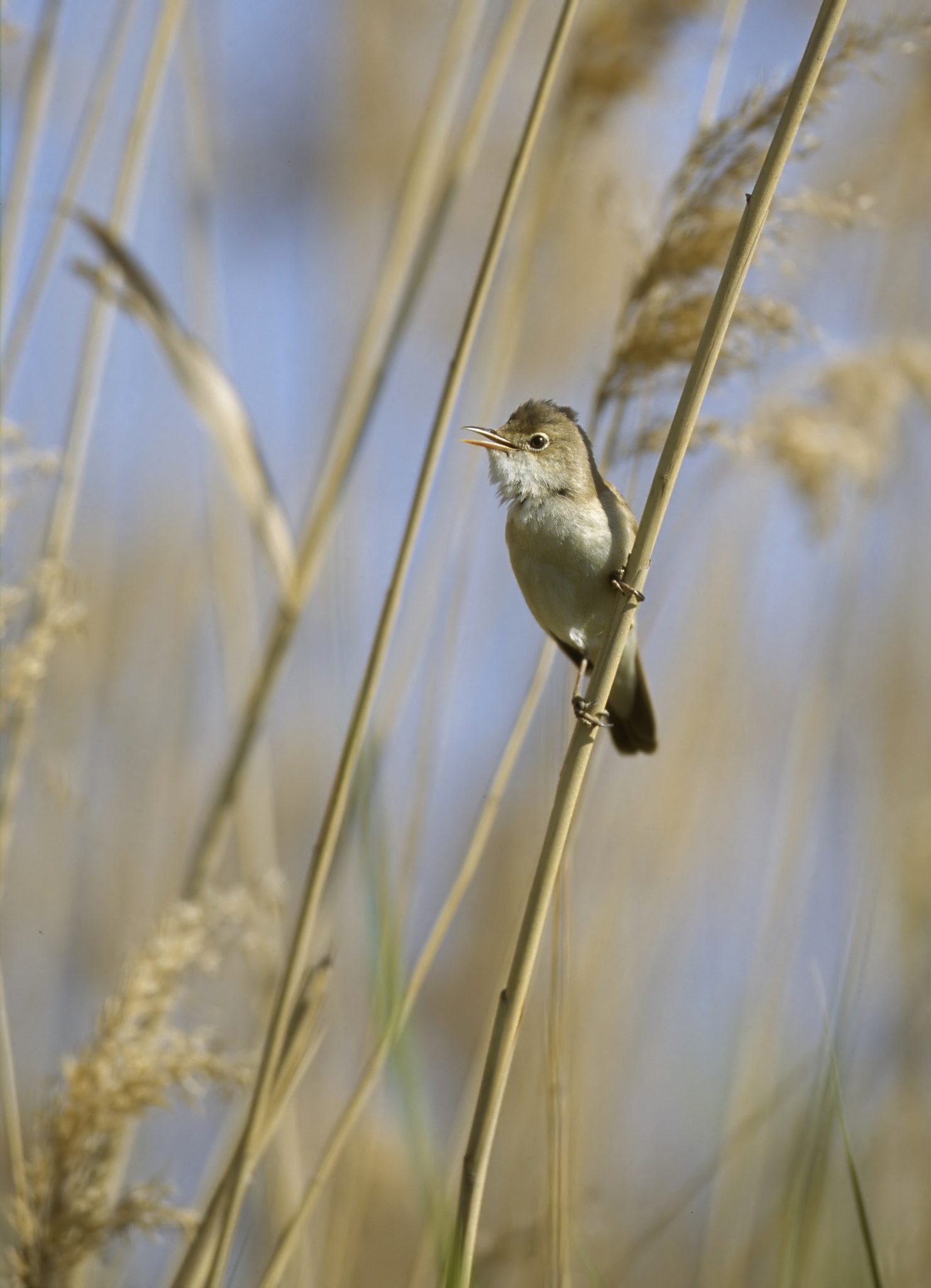The song of the sedge warbler (Acrocephalus schoenobaenus) is one the most common sounds heard among the reeds (photo). Their chattering songs can be heard all around on summer nights. The reed beds are home to hundreds of pairs of nesting sedge warblers.
The Eurasian reed warbler’s (Acrocephalus scirpaceus) song is similar to that of the sedge warbler, but more repetitive and monotonous.
The undisputed king of the warblers is the great reed warbler (Acrocephalus arundinaceus). Its song is a powerful, scraping mix of screeching sounds and chattering. Great reed warblers are so loud that it is hard to believe that there are only fewer than ten singing individuals in Vanhankaupunginlahti. One of their territories is the pond in Pornaistenniemi.
The great reed warbler and the Eurasian reed warbler first started nesting in Finland in the 1930s, with Vanhankaupunginlahti being their first nesting site. They are tied to dense reed beds, which have increased in Finland due to eutrophication.
In the past, extensive reed beds were likely more common in Estonia than in Finland. In the Estonian language, the names of many bird species that nest among the reeds include the word for reed, ‘roog’ (genitive form ‘roo’). Examples include the western marsh harrier (roo-loorkull), the bearded reedling (roohabekas), the water rail (rooruik), the common reed bunting (rootsiitsitaja), the sedge warbler (kõrkja-roolind), the Blyth’s reed warbler (aed-roolind), the marsh warbler (soo-roolind), the Eurasian reed warbler (tiigi-roolind) and great reed warbler (rästas-roolind).

The great reed warbler, photo Tomi Muukkonen.

The Eurasian reed warbler’s, photo Tomi Muukkonen.